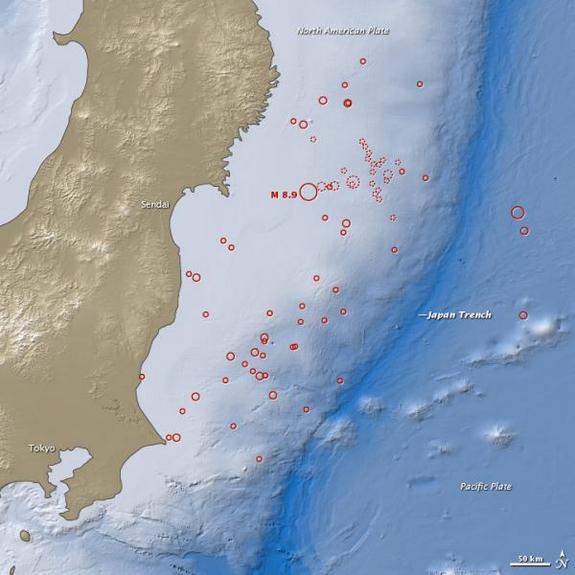
Massive Japan Quake Even Rattled Upper Atmosphere

The giant earthquake that struck Japan this year not only shook the Earth, but also rattled the highest layer of the atmosphere, scientists find.
This research could lead to a new type of early warning system for devastating tsunamis and earthquakes.
The magnitude 9 quake that struck off the coast of Tohoku in Japan in March unleashed a catastrophic tsunami, ushered in what might be the world's first complex megadisaster and set off microquakes and tremors around the globe.
Past research revealed the surface motions and tsunamis that earthquakes generate can also trigger waves in the atmosphere. These waves can reach all the way to the ionosphere, one of the highest layers of the atmosphere.
Now scientists report the Tohoku quake generated the largest such disturbances seen yet, creating ripples in electrically charged particles reaching nearly 220 miles (350 kilometers) above the Earth.
Investigators measured these disruptions, called seismotraveling ionospheric disturbances, using about 1,000 global positioning system (GPS) receivers in Japan and Taiwan. Disruptions of the electrically charged particles in the ionosphere would lead to anomalies in radio signals between the ground receivers and the GPS satellites, data that scientists can measure.
Scientists detected a disc-shaped rise in electron density in the ionosphere about seven minutes after the earthquake. Concentric waves of fluctuating electron density then flowed out in the ionosphere from this disk at speeds of about 450 to 500 mph (720 to 800 kph). All in all, this disruption was about three times greater than the next largest one ever seen, which came after the 2004 magnitude 9.3 Sumatra earthquake.
Sign up for the Live Science daily newsletter now
Get the world’s most fascinating discoveries delivered straight to your inbox.
The ripples that flowed from the initial disc-shaped disturbance in the ionosphere appear to be linked to the tsunami, a connection that has the potential to save lives. "This signature in space that we can see with GPS could provide early warning that a tsunami is coming," researcher Jann-Yenq "Tiger" Liu, an atmospheric scientist at Taiwan's National Central University, told OurAmazingPlanet.
One important question in determining how much of a warning his phenomenon might provide is: "Is there any detectable precursor in the status of the ionosphere before this disturbance is actually observed?" said atmospheric physicist Gaopeng Lu at Duke University, who did not take part in this study. "In that way, we might be able to predict the occurrence of earthquakes."
Liu and his colleagues detailed their findings online June 28 in the Journal of Geophysical Research-Space Physics.
This story was provided by OurAmazingPlanet, sister site to LiveScience.











